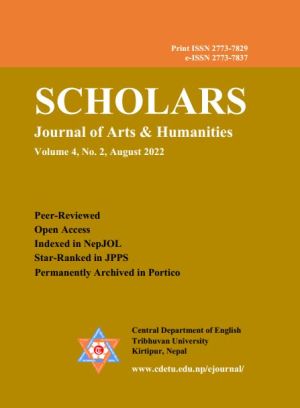The Power of the Unsaid in Graphic Narratives: Decoding Joe Sacco
DOI:
https://doi.org/10.3126/sjah.v4i2.47418Keywords:
Palestine-Israel conflict, haptic visuality, graphic, gestural representationAbstract
This paper analyzes the representation of Palestine-Israel conflict in Joe Sacco’s graphic novel Palestine (2001) through the foregrounding of haptic visuality—a terminology in a visual text for conveying a sense of visceral touching evoked by the visual image—at the center of which lies the use of gesture. Drawing upon both techniques of reading a graphic text and Giorgio Agamben’s notion of gesture, this paper intensely examines the graphic based gestural representation in the novel. It aims to unravel Sacco’s attempt to redirect his readers’ affect of sympathy towards the Palestinian refugees by exposing the prevailed discrepancies in the media reportage and the implicit reasons of the Middle East conflict. The paper concludes that the gesture-based visual narration of the clashes help Sacco expose his readers to both emotional and rational veracity of the conflict. This exposure finally redirects his readers towards a gesture-actuated visceral witnessing to the Palestinians’ pain and evokes the ethos for the Palestinian refugees.
Downloads
Downloads
Published
How to Cite
Issue
Section
License
Copyright (c) 2022 Central Department of English, Tribhuvan University and Authors

This work is licensed under a Creative Commons Attribution 4.0 International License.
© Central Department of English, Tribhuvan University and Authors




